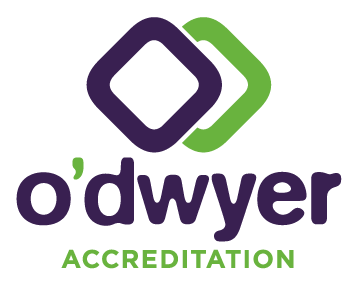Once you decide that you want to get NATA accreditation, how do you go about it?
The NATA website includes a complex maze of documents describing NATA’s accreditation criteria and a brief description of the accreditation process. But their overview leaves out the all-important first step that will make your journey to accreditation much easier – tuning in to your customer’s needs.
Here is a more balanced overview of the accreditation process, with some insights from my time working at NATA.
Step 1: Focus on your customers first
Decide which tests (and methods) your laboratory will need to offer (‘scope of accreditation’). You need to check with your clients about this: what are they asking you for? How will they be using the test results you provide?
You may need to read up on the regulations that your clients are working to – to determine if particular methods or techniques are specified. Or, if you know of a competitor that has NATA accreditation, you can look at the scope of their accreditation on the NATA website and base your scope on that.
If you are clear about the scope you need before you begin, you’ll know exactly which of NATA’s technical requirements you have to meet. This can save significant time and money when it comes to the NATA assessment.
Then, contact NATA to tell them that you’re thinking about getting accredited.
They’ll guide you to the accreditation requirements you need, and you can ask them for a cost estimate too.
Once you have copies of all of the accreditation documents, you’re in for some serious study. Review the documents, consider how your laboratory meets the criteria and identify areas that need attention.
A good way to approach this is a gap analysis.
Step 2: Develop your quality system
Develop any processes or procedures that are missing from your system. Here is some help with writing lab management documents.
If you haven’t already, start conducting internal audits. You also need to hold a management review meeting to plan your next steps in the NATA accreditation process.
Step 3: Arrange your NATA advisory
Contact NATA to ask them to conduct an Advisory Visit.
An advisory visit is an informal process where NATA gives you feedback on your quality system and any obvious gaps in your technical operations. They’ll expect you to rectify these before they agree to start arranging an assessment.
The advisory visit is a great chance to ask questions about the NATA accreditation criteria and how to apply them in your NATA laboratory. Make the most of the opportunity by having your list of questions ready.
It’s only after a successful advisory visit that NATA will give you an application form so that you can apply for accreditation.
Step 4: Schedule a NATA assessment
NATA will arrange a technical assessment after you tell them you are ready. Ensure you get the application form from them early, as NATA can take eight weeks or even more to schedule an assessment from the date you submit the form.
We advise you to address any issues that NATA identified at the advisory visit before the assessment.
The assessment will be far more technical in focus than the advisory visit, as a peer assessor from a similar industry to yours will review the technical aspects of your laboratory.
Meanwhile, the NATA auditor will be reviewing the quality system in detail.
Step 5: NATA assessment follow-up
NATA will leave you with a detailed assessment report, including non-conformances.
These ALL need to be addressed before NATA grants accreditation. Sometimes misunderstandings and intransigence can extend this stage unduly.
Step 6: Receive your NATA accreditation
Finally, the big day has arrived!
NATA has sent you a certificate of accreditation that you proudly display in the foyer. You can start issuing NATA-endorsed test reports and using the NATA logo in your marketing materials.
Maintaining your NATA accreditation
You don’t get to just sit back and relax after all that!
NATA returns on a regular basis to re-assess your laboratory and quality system. The exact details of this process vary depending on whether you have ISO 17025 accreditation or ISO 15189 accreditation.


